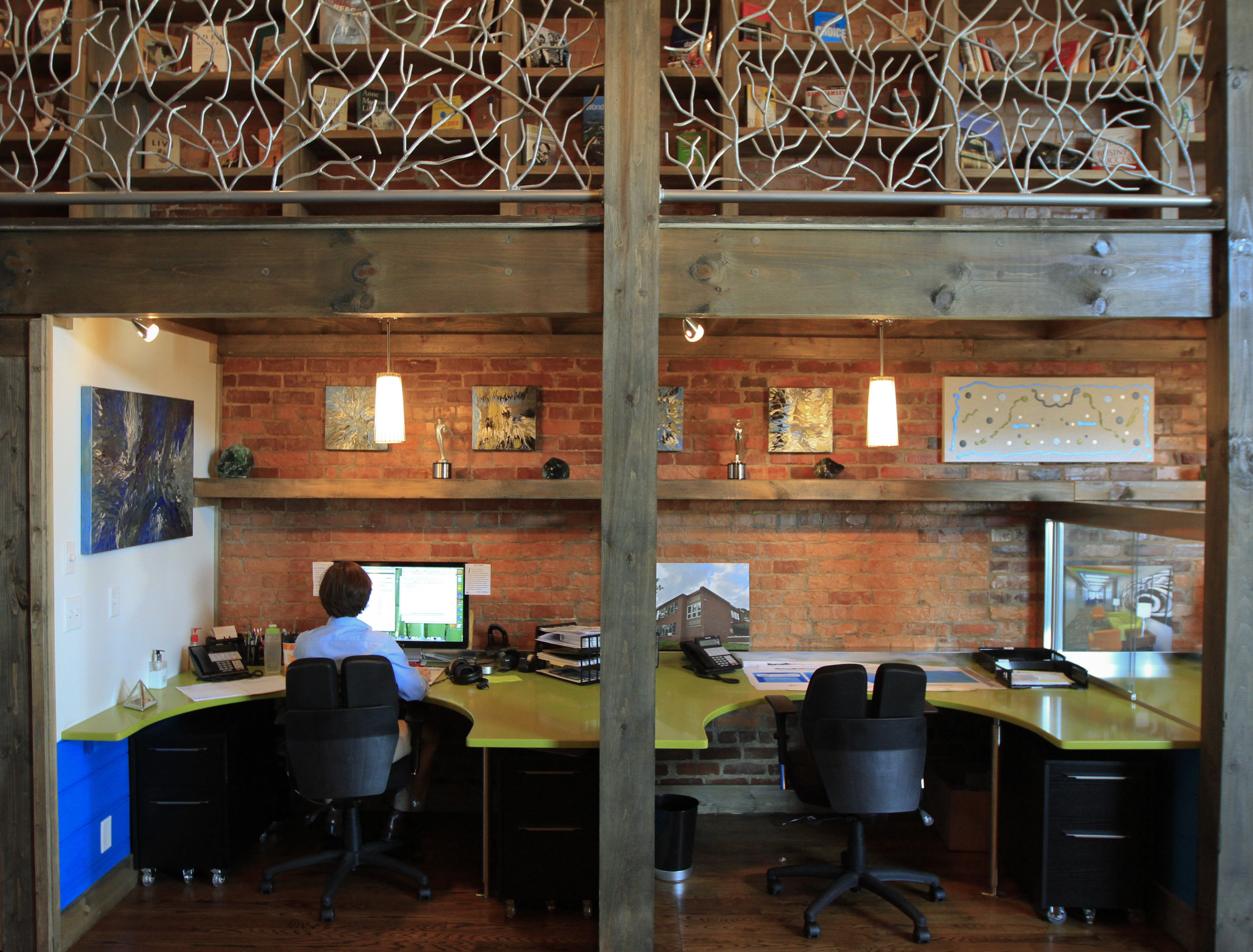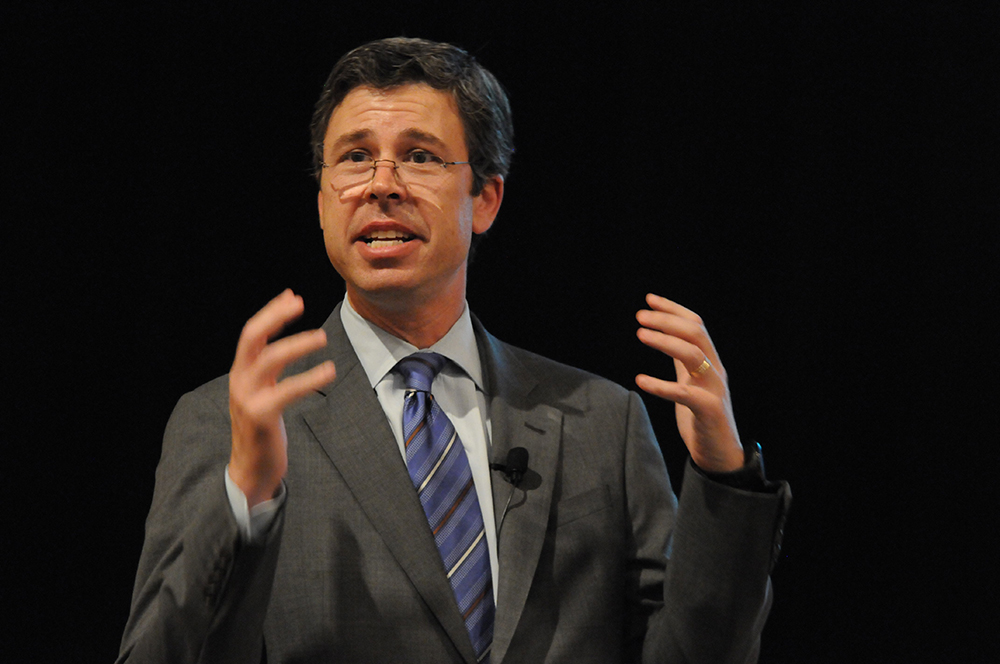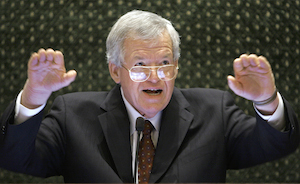Harnessing innovation: Mayor Andy Berke hopes district will spur Chattanooga business
Wednesday, June 11, 2014
Not so long ago, a city's best and smartest companies built secluded corporate campuses on the edge of town with sprawling parking lots, tinted windows and towering walls.
Each campus was an island sequestered in a suburban corridor, far from restaurants or homes or parks.
But that model is dying, and fast.
These days, research-oriented, creative firms are moving back into urban cores. Workers want to work where they live. They want walkable neighborhoods that include a mix of businesses, homes, coffee shops and restaurants, and businesses are answering. So-called 'innovation districts -- geographic clusters of offices, retail and housing -- are popping up in cities across the nation, according to a new study by the Brookings Institute in Washington, D.C.
Including Chattanooga, if Mayor Andy Berke has his way.
The mayor called for Chattanooga to establish an innovation district during his State of the City address in April. He pictures a place where Chattanooga's existing assets -- gigabit-per-second Internet, a thriving entrepreneurial scene, and higher education -- can coalesce, bonded together by new companies, new housing and creative people.
Innovation districts have enormous potential to create jobs, drive a city's growth and spark urban renewal, study co-author Bruce Katz said at a panel discussion Monday. But there are dozens of moving parts that have to come together in just the right way to build a successful innovation district, from capital investment to physical infrastructure.
And while Chattanooga has many of the raw ingredients for an innovation district, the study suggests Berke may have to improve the quality of local schools and address a lack of downtown housing while walking a thin line to create the district without just gentrifying the area.
Berke has not yet determined where the city's innovation district will be located, but the study named several factors that the area will need in order to succeed.
Every innovation district needs economic, networking and physical assets, Katz said. Economic assets include everything from major firms to coffee shops, while physical assets include both public and private spaces. Networking is critical for people both in the same industry and in separate industries, the study found.
With a long history of collaboration, Chattanooga is already strong in the networking category. Entrepreneurs can attend an accelerator at the Co.Lab, secure capital from the LampPost Group, the Jump Fund, Spartan Ventures, Blank Slate Ventures or the Chattanooga Renaissance Fund, and then head to the Business Development Center for cheap office space.
Even some new firms have popped up to help drive capital investment and economic development, like SwiftWing Ventures, a new group of venture capitalists who bought the old Fleetwood Building on 11th Street and plan to turn it into office space.
"If you look at what is happening now, we have tremendous energy," Berke said.
Yet the city still has a long way to go, including pulling top talent to the proposed innovation district from other larger -- and sometimes more appealing -- cities like Boston or San Francisco.
"You've got to design and execute different strategies for success," Katz said. "Pursuing talent is essential. Talent attracts talent."
High-quality schools like UTC or Chattanooga State can pump talent into the community, said Ken Hays, president of the Enterprise Center, the organization Berke has tasked with creating the district. But the best workers also want to send their kids to good schools, and they want to live in neat places, he added.
"Part of attracting talent and keeping them is having a great place for them to live," Hays said. "And talent is challenge, but it's a hurdle we can easily jump."
Berke, who was a featured speaker during a two-hour discussion with the study's authors on Monday, told the crowd that he believes Chattanooga's high quality of life can also pull top talent to the city.
"Chattanooga is a quality of life city," he said. "The reason people come here is quality of life. If we're making decisions in city hall and elsewhere that bring down quality of life, we're losing ground."
And a handful of new downtown housing projects -- like River City Company's request to turn the old Ross Hotel into apartments and the four-story building under construction on the Southside -- show that the city is already tackling the lack of affordable downtown housing, Hays said.
The dearth of downtown housing touches on a problem that much of the study focused on -- how to create innovation districts without gentrifying that part of town.
"I've been to Chattanooga," Katz said. "The downtown is incredibly vibrant and distinctive, but you can go to areas not that far away and see hyper-poverty -- and there isn't a connection right now."
In other cities, innovation districts were designed to include affordable housing and community services, Katz said. In San Francisco, for example, 32 percent of 12,500 new homes in the city's innovation district will be affordable, while the remaining will be market-rate.
Hays said it's too early to know whether the plans for Chattanooga's innovation district will include subsidized housing. But he added he's confident the community will find a solution.
"Anytime we've made leaps and bounds in this community is when we've all worked together," he said. "Our challenge over the next several months is to get everyone on the same page, put a stake in the ground and do it."
Contact staff writer Shelly Bradbury at 423-757-6525 or sbradbury@timesfreepress.com with tips and story ideas.



